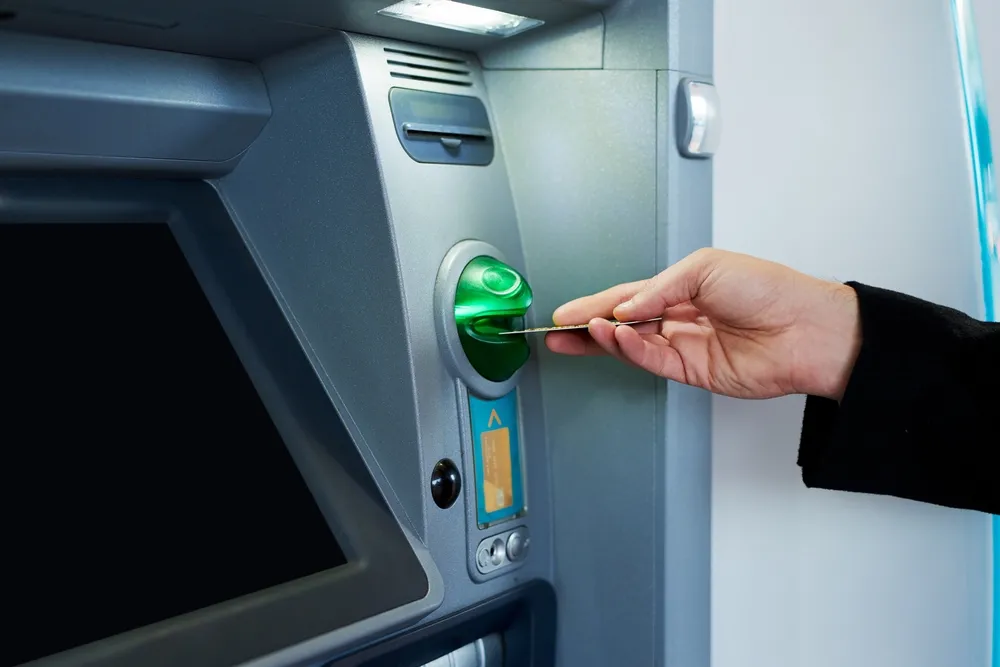Banking is a financial minefield, with hidden fees lurking around every corner. While you might assume your hard-earned money is safely tucked away, banks have a way of slipping in charges that can slowly drain your account. These fees, often buried in the fine print, can add up quickly and leave you wondering where your money went. To keep your finances on track, it’s crucial to stay informed about the potential pitfalls that could be hiding in your bank statement.
1. Overdraft Fees

Overdraft fees are the banking world’s equivalent of a traffic ticket—sudden, often unexpected, and frustratingly expensive. When you spend more than what’s in your account, banks cover the shortfall but slap you with a fee for the privilege. According to a 2021 study by the Consumer Financial Protection Bureau, the average overdraft fee is around $35, which can add up quickly if you’re not careful. Monitoring your account balance regularly can help you avoid this costly mistake.
Banks justify these fees as a necessary service for covering your transactions and preventing bounced checks. However, many argue that these charges disproportionately affect people living paycheck to paycheck. It’s not uncommon to see multiple overdraft fees piling up over a single day, especially if you’re making small purchases. Opting for a bank with more forgiving overdraft policies or setting up alerts to notify you when your balance is low can help mitigate this issue.
2. Monthly Maintenance Fees

Monthly maintenance fees are like a subscription service for your bank account, except you rarely get anything in return. These fees can range from $5 to $25 a month, depending on the bank and the type of account you have. They’re often waived if you meet certain criteria, such as maintaining a minimum balance or setting up direct deposits. However, if you don’t meet these requirements, you could be out a few hundred dollars by year’s end.
While some people find these fees to be a minor inconvenience, they can be a significant burden for those on a tight budget. It’s essential to read the fine print when opening an account to understand what it will take to avoid these charges. Many people are unaware that switching to a no-fee bank or credit union can save them a significant amount of money over time. By shopping around, you can find an account that better suits your financial needs without the added cost.
3. ATM Fees

ATM fees are a classic example of being charged for convenience, often when you least expect it. If you venture outside your bank’s network, you could be charged twice—once by the ATM owner and again by your bank. A 2022 report from Bankrate found that the average combined fee for using an out-of-network ATM is about $4.66. This might not sound like much, but frequent ATM users could find themselves paying over $100 a year in fees.
These fees are a reminder to plan ahead and withdraw cash from in-network ATMs whenever possible. If you find yourself frequently using out-of-network ATMs, consider switching to a bank that reimburses these fees. Some online banks and credit unions offer accounts specifically designed to minimize ATM charges. It’s a small step, but it can make a big difference in your financial health over time.
4. Foreign Transaction Fees

Foreign transaction fees are the silent cost of globe-trotting, adding an unpleasant surprise to your travel expenses. Typically, these fees are around 1% to 3% of each purchase you make abroad. While it might not seem like much, it can quickly inflate your travel budget without you even realizing it. Before you head overseas, it’s worth checking if your bank charges these fees and considering alternatives if they do.
Credit cards are often the worst offenders when it comes to foreign transaction fees, but some banks also charge them on debit card purchases. To avoid these fees, consider opening an account with a bank that offers fee-free international transactions or using a travel-friendly credit card. This small change can save you significant money over the course of a lengthy vacation. Planning ahead can help you enjoy your trip without worrying about unnecessary financial burdens.
5. Account Closure Fees

Closing a bank account isn’t always as simple as it sounds, and some banks charge a fee just to let you leave. This fee is often applied if you close your account within a certain period, typically 60 to 90 days after opening it. A 2021 survey by DepositAccounts found that account closure fees can range from $25 to $50, an unpleasant parting gift from your bank. It’s a good idea to inquire about these fees before opening an account to avoid any surprises down the line.
These fees are particularly frustrating because they feel like a penalty for being proactive with your financial decisions. If you’re considering switching banks, ensure you understand any potential costs associated with closing your old account. Strategizing the timing of your account closure can help you avoid these fees, especially if you’re within the penalty period. Transparency and communication with your bank are key to managing these charges effectively.
6. Wire Transfer Fees

Wire transfers are the go-to for sending large sums of money quickly, but they’re far from free. Domestic wire transfers can cost you anywhere from $15 to $30, while international transfers can set you back even more. These fees can be a shock if you’re not expecting them, especially with the rise of alternative money transfer options. It’s crucial to weigh the convenience of a wire transfer against its cost before deciding to use this service.
The fees aren’t just limited to sending money; receiving wire transfers can also incur charges. It’s worth considering other options, like online payment platforms, which often have lower fees or even no fees at all. Understanding the fees associated with wire transfers can help you make more informed decisions about your money. In today’s connected world, you have more choices than ever for moving money across borders without breaking the bank.
7. Paper Statement Fees

In an increasingly digital world, receiving a paper statement might seem old-fashioned, but it can come with a modern-day price tag. Many banks charge a fee for mailing physical statements, often around $2 to $5 per month. A 2022 report by the American Bankers Association noted that digital banking adoption is on the rise, yet some people still prefer paper for its tangible nature. Opting out of paper statements and choosing electronic ones is a simple way to reduce unnecessary costs.
These fees might seem small, but they add up over time, costing you both money and contributing to paper waste. Switching to e-statements can save you money and simplify your financial tracking by keeping everything in one digital space. If you value having a physical copy, consider printing statements at home when necessary. This small adjustment in your banking preferences can positively impact both your wallet and the environment.
8. Inactivity Fees

Inactivity fees penalize you for not using your account, a concept that feels almost counterintuitive. If you go a certain period without any transactions, typically six months to a year, some banks will charge a monthly fee. These charges can range from $5 to $15, adding up quickly if you don’t monitor dormant accounts. It’s essential to check your bank’s inactivity policy to avoid being caught off guard.
These fees often catch people by surprise, especially if they have secondary accounts they don’t use regularly. To avoid these charges, consider setting up small, recurring transactions or automating a monthly transfer. This keeps the account active and saves you from unnecessary fees. By staying engaged with all your financial accounts, you can avoid paying for the privilege of doing nothing.
9. Returned Deposit Fees

Returned deposit fees occur when a check you’ve deposited bounces, sending your finances into a tailspin. Not only do you not get the money you were expecting, but your bank might charge you anywhere from $10 to $20 for the failed transaction. This fee is a reminder of the importance of ensuring that checks are good before depositing them. It’s a small but significant detail that can save you from financial headaches.
Checking the status of a check before deposit is now easier with digital banking tools that offer real-time updates. If you frequently receive checks, it’s worth discussing alternatives like direct deposit with the payer. This reduces the risk of bounced checks and associated fees, making your financial life a little bit smoother. Being proactive about deposits is key to keeping your account in good standing.
10. Stop Payment Fees

Stop payment fees are the cost of hitting pause on a financial transaction, often at a steep price. If you need to stop a check or automated payment, your bank might charge you between $15 and $35. This fee can be particularly frustrating if you’re dealing with a payment error or fraud. Understanding your bank’s policy on stop payments can help you weigh the cost against the necessity of the action.
These fees underscore the importance of monitoring your accounts regularly and acting quickly if you spot an error. Some banks offer fee waivers under certain conditions or for specific account types, so it’s worth asking about your options. While stop payments can offer peace of mind, they’re not a decision to be taken lightly due to the potential cost. Always explore all available options before opting to hit the brakes on a payment.
This article is for informational purposes only and should not be construed as financial advice. Consult a financial professional before making investment or other financial decisions. The author and publisher make no warranties of any kind.








